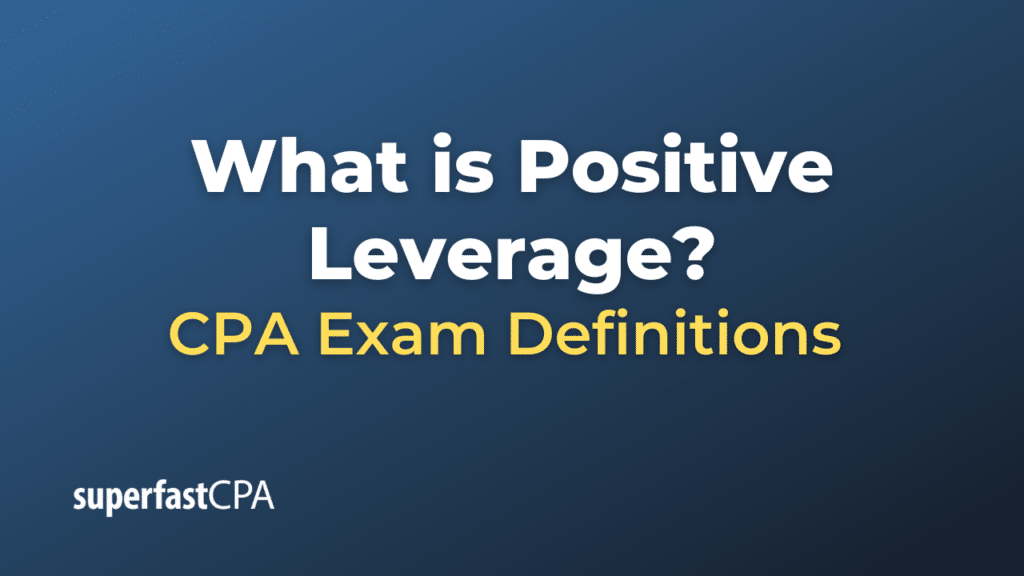Positive Leverage
Positive leverage occurs when debt is used to finance an investment, and the return on the investment is greater than the cost of the debt. Essentially, the borrowing costs are less than the income generated by the borrowed funds, leading to increased profitability.
The concept of positive leverage is often used in real estate, where investors borrow money at a certain rate of interest to invest in a property, hoping that the property will generate a higher rate of return.
For example, if an investor borrows money at an interest rate of 4% to purchase a property that returns 8%, the investor is experiencing positive leverage. The investor is earning more on the property investment than what it costs them to service the debt, leading to increased profits.
However, while leverage can increase potential returns, it also increases risk. If the return on the investment falls below the cost of borrowing, then the investor would experience negative leverage. As such, the use of leverage needs to be carefully managed.
Example of Positive Leverage
Imagine that an investor, John, is interested in purchasing a rental property that costs $500,000. He expects this property can generate an annual income of $50,000 (a 10% return on the investment). However, John only has $200,000 in cash available for investment.
To make up the difference, John takes a loan of $300,000 from a bank at an interest rate of 5% per annum. So, his annual interest expense on the loan is $15,000.
Now, let’s calculate John’s return on investment:
The rental income from the property is $50,000. From this, John needs to subtract his interest expense, which is $15,000. This leaves him with a net income of $35,000.
Even after the cost of the debt is taken into account, John’s effective return on his investment is $35,000/$200,000 = 17.5%. Without leveraging, his return would have been 10% ($50,000/$500,000). Thus, in this case, John has used positive leverage to increase his return on investment from 10% to 17.5%.
Remember, while this example highlights how positive leverage can boost returns, it’s important to note that leverage also involves higher risk. If the rental income was lower than expected or if the property value decreased, the debt would still need to be serviced, potentially leading to financial difficulties.













